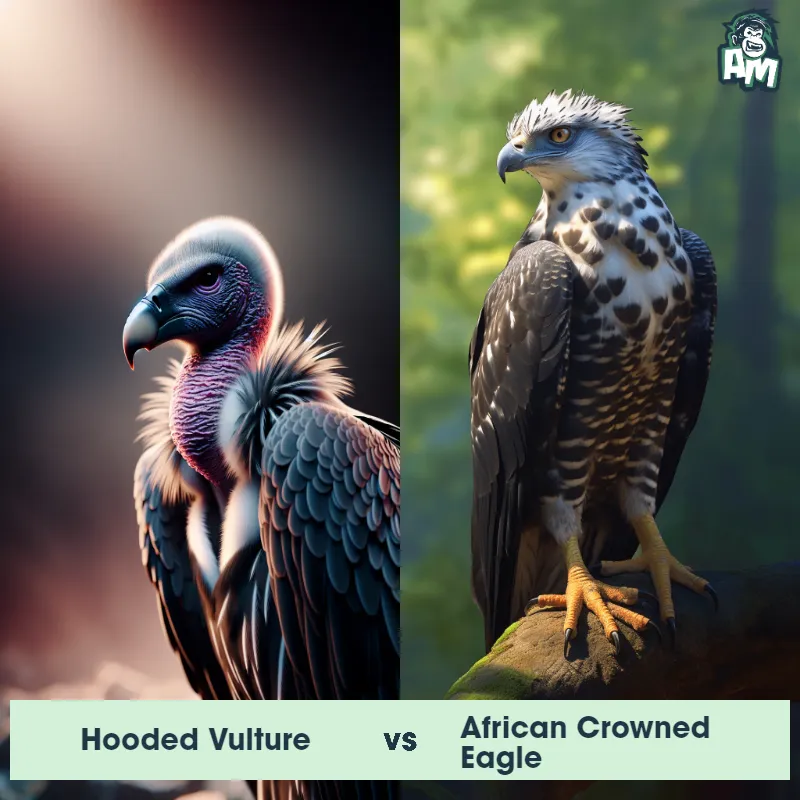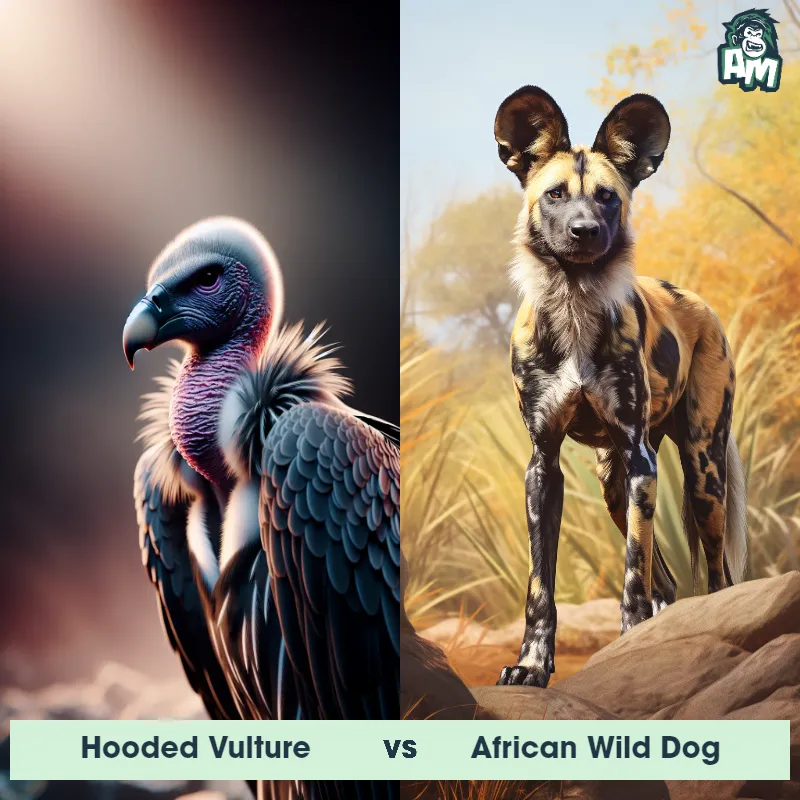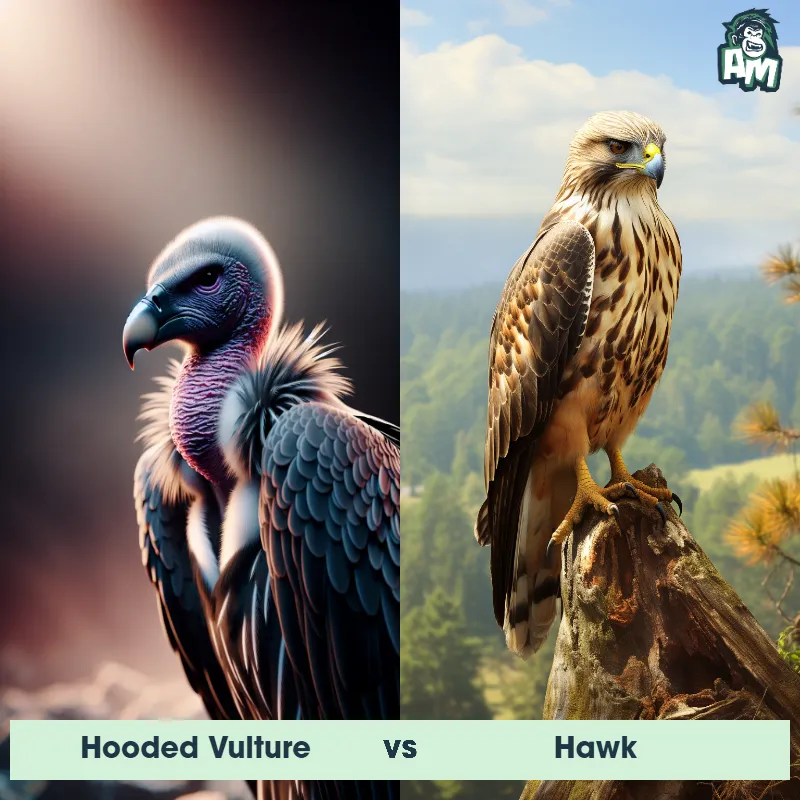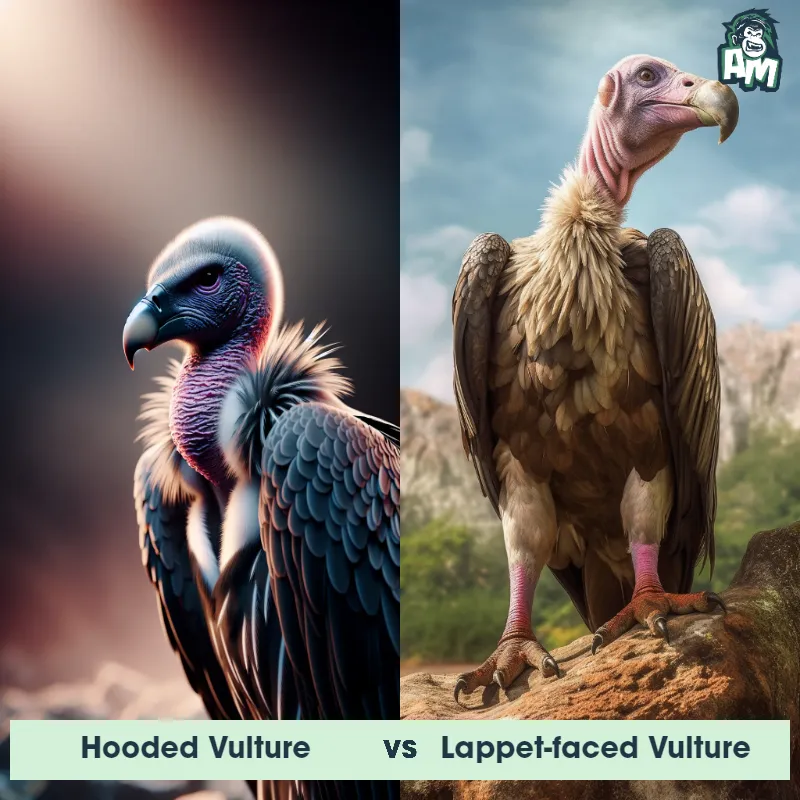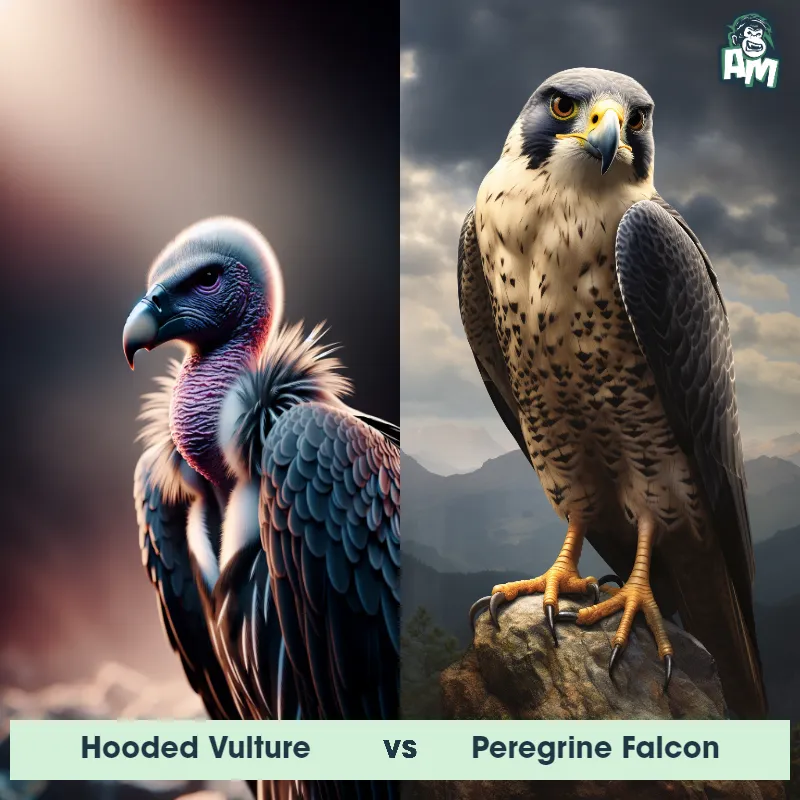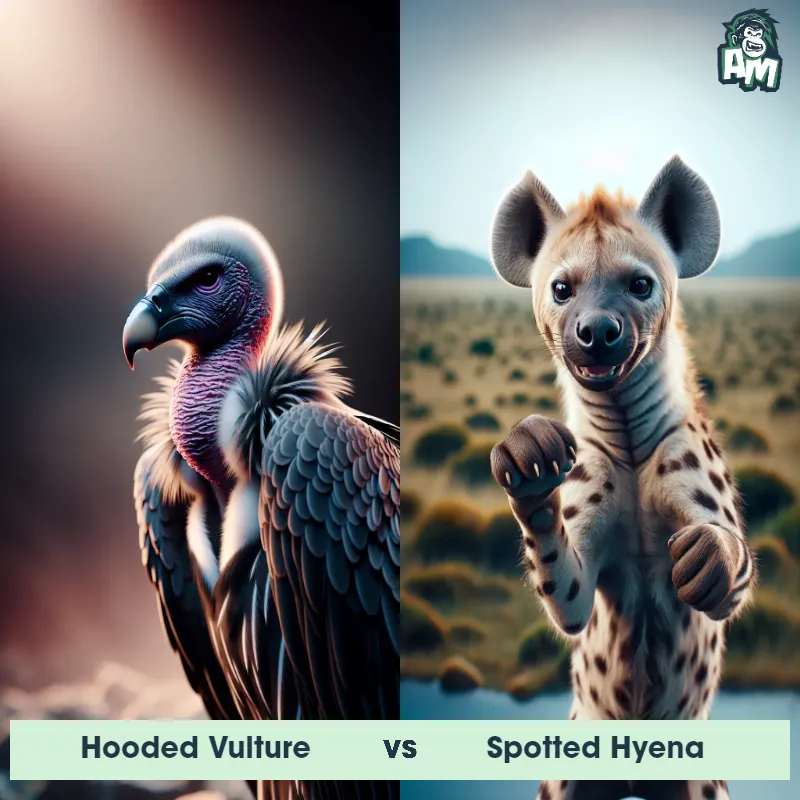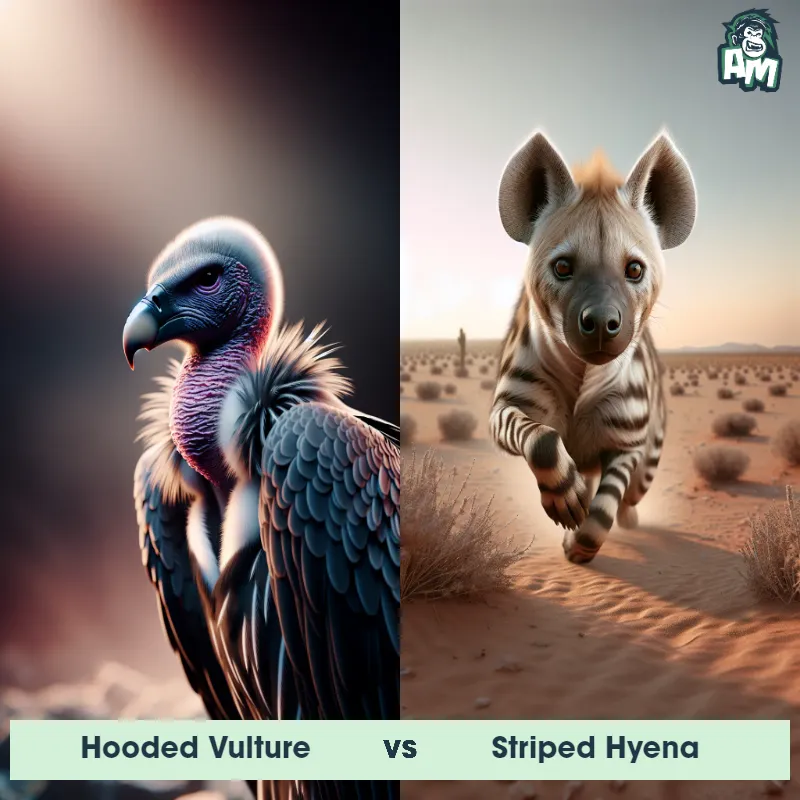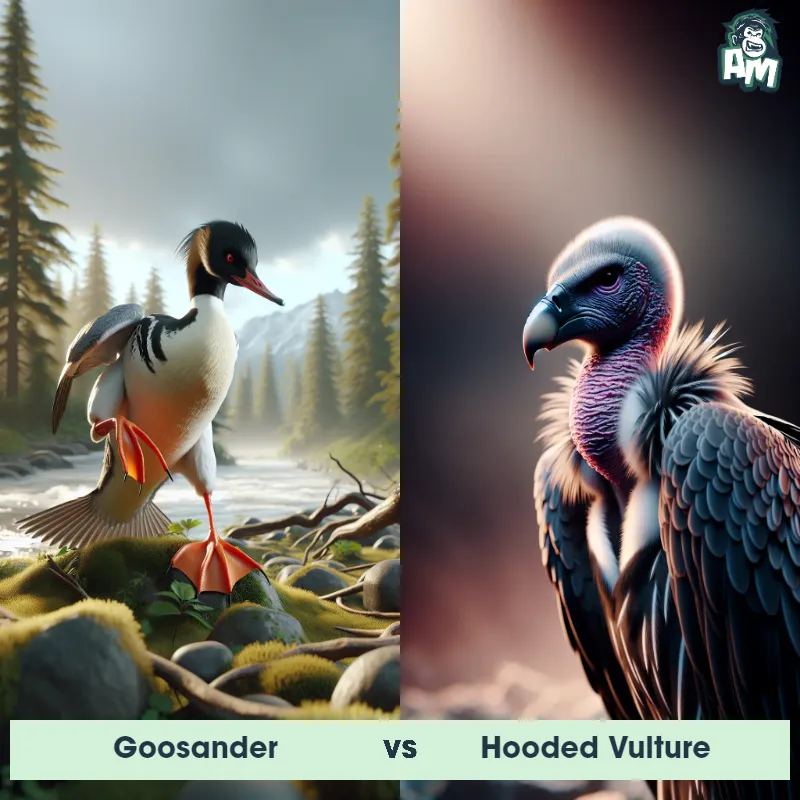The Hooded Vulture
The Hooded Vulture, scientifically known as Necrosyrtes monachus, is a medium-sized bird that belongs to the vulture family. It is easily recognizable due to its unique appearance characterized by a black-colored body, a featherless neck and head, and a large, powerful beak. The vulture measures around 65–75 cm in length and has a wingspan of about 155–170 cm. Its body is covered with dark brownish-black feathers, except for the pale grey bands on the underside of its wings. This scavenger species is mainly found in sub-Saharan Africa and is known for its ability to locate carrion from long distances.
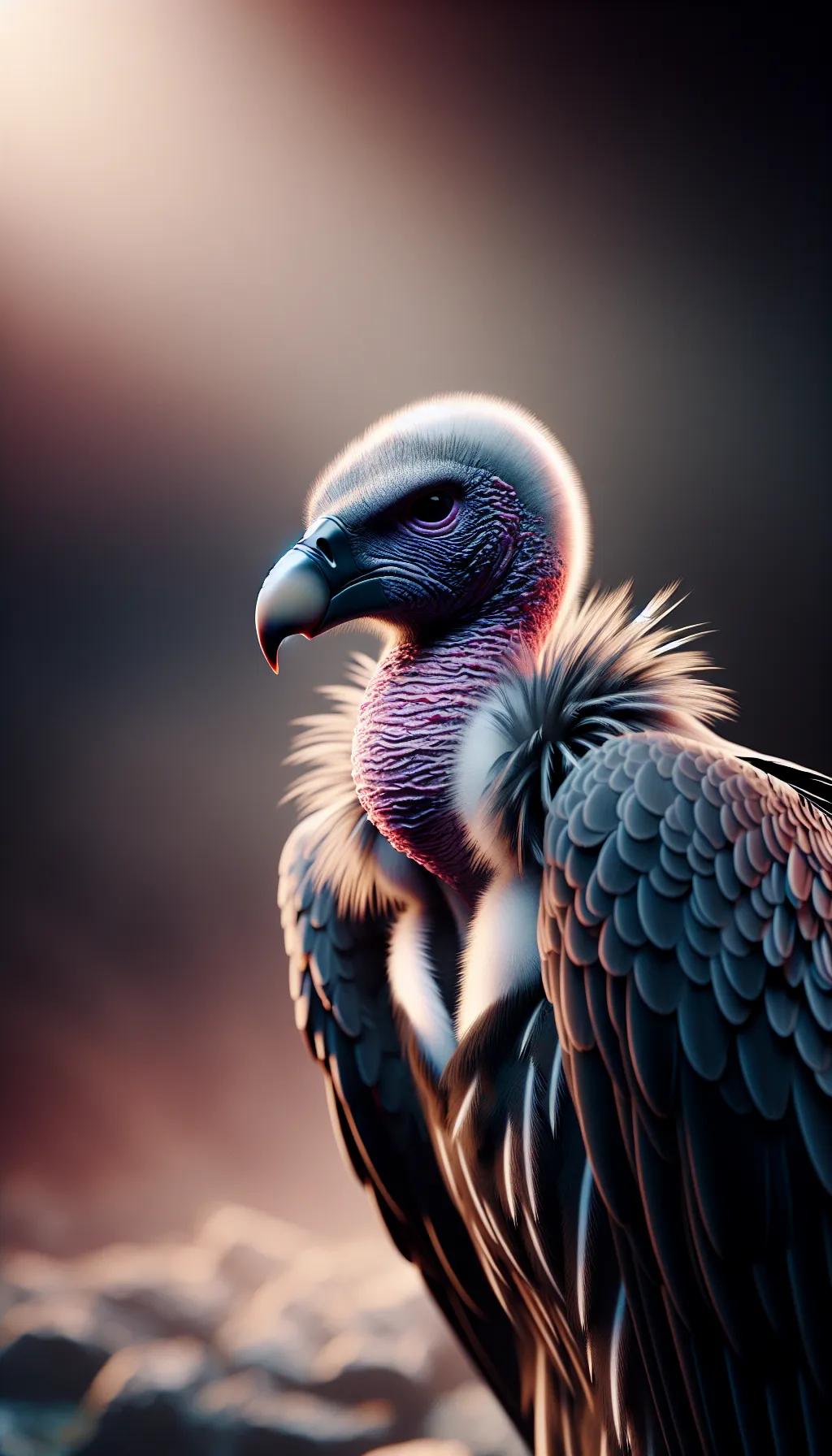
| Hooded Vulture | |
|---|---|
| Size | Approximately 150-160 cm (wingspan) |
| Weight | 1.2 to 2.6 kg |
| Speed | 60mph (97km/h) |
| Key Strength | Unknown |
| Biggest Weakness | Unknown |
| Scientific Name | Necrosyrtes monachus |
| Family | Accipitridae |
| Habitat | Savannas, grasslands, and woodlands |
| Geography | Sub-Saharan Africa |
| Diet | Carrion (dead animals) |
| Lifespan | 15 years - 20 years |

The Hooded Vulture
The Hooded Vulture, scientifically known as Necrosyrtes monachus, is a medium-sized bird that belongs to the vulture family. It is easily recognizable due to its unique appearance characterized by a black-colored body, a featherless neck and head, and a large, powerful beak. The vulture measures around 65–75 cm in length and has a wingspan of about 155–170 cm. Its body is covered with dark brownish-black feathers, except for the pale grey bands on the underside of its wings. This scavenger species is mainly found in sub-Saharan Africa and is known for its ability to locate carrion from long distances.
Fun Fact: The Hooded Vulture has an impressive ability to detect a carcass from miles away, using its excellent eyesight to spot other scavengers hovering above or to follow the scent in the air, allowing it to quickly locate a meal in the African savannah.
| Hooded Vulture | |
|---|---|
| Size | Approximately 150-160 cm (wingspan) |
| Weight | 1.2 to 2.6 kg |
| Speed | 60mph (97km/h) |
| Key Strength | Unknown |
| Biggest Weakness | Unknown |
| Scientific Name | Necrosyrtes monachus |
| Family | Accipitridae |
| Habitat | Savannas, grasslands, and woodlands |
| Geography | Sub-Saharan Africa |
| Diet | Carrion (dead animals) |
| Lifespan | 15 years - 20 years |
Hooded Vulture Matchups
We use AI to simulate matchups between the Hooded Vulture and other animals. Our simulation considers size, strength, and natural predatory behaviors to determine the most likely outcome.

Can't find the Matchup you want?
Create Your Own MatchupHooded Vulture: Diet, Predators, Aggression, and Defensive Behaviors
What do Hooded Vultures eat?
Hooded Vultures are scavengers and primarily feed on carrion, including the remains of dead animals. They have a keen sense of smell that helps them locate food, even when it is hidden from view.
Do Hooded Vultures have any predators?
Hooded Vultures are relatively small compared to other vulture species, making them vulnerable to predation by larger birds of prey such as eagles and large owls. Additionally, they may also fall prey to terrestrial predators like wildcats and jackals.
Are Hooded Vultures aggressive?
Hooded Vultures are generally not aggressive birds and are known for their relatively docile nature. They are more likely to scavenge for food peacefully alongside other vulture species rather than engaging in aggressive behavior.
Do Hooded Vultures fight?
While Hooded Vultures may occasionally engage in fights with other individuals over food sources, they are not known for being particularly aggressive or territorial. These fights are usually brief and do not result in serious injury to the birds involved.
How do Hooded Vultures defend themselves?
Hooded Vultures rely on their sharp beaks and talons for defense when threatened. They may also use their wings to intimidate predators or other birds that pose a threat to them. However, their primary defense mechanism is to take flight to escape potential dangers.
What is the biggest weakness of Hooded Vultures in a fight?
Despite having sharp beaks and talons, Hooded Vultures are relatively small and may be overpowered by larger and more aggressive birds of prey. Their size and lack of powerful physical defenses can make them vulnerable in confrontations with stronger predators.
Fun Fact: Unlike other vultures that have strong neck muscles to tear apart carrion, the Hooded Vulture has a relatively weaker beak with less tearing power. This adaptation helps them rely more on accessing already open carcasses, such as those torn apart by larger vultures or predator scavengers.
Fun Fact: Hooded Vultures have an extremely close relationship with humans, often found near human settlements and even foraging on garbage dumps. They play an important ecological role by helping to control the spread of diseases by consuming rotting animal matter that would otherwise become breeding grounds for bacteria and diseases.



